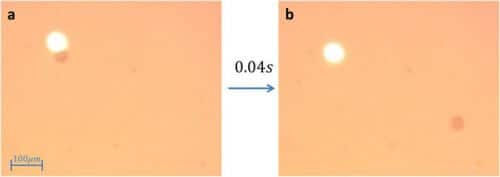The technology may have significant effects in the development of micromotors and optical devices to be used in solar cell optics.

Researchers from Ben-Gurion University of the Negev have developed an innovative technique, which uses light and tiny bubbles to push micro-particles with forces several times stronger than those previously known.
The new technique could have considerable effects in the development of micromotors and optical devices to be used in solar cell optics. "We hope to eventually achieve a very accurate tolerable technology that will be used in a focused solar device that will follow the sun without the need for a mechanical tracking mechanism," says Dr. Avi Niv, one of the authors of the study.
According to the findings recently published in the journal Nature Scientific Reports, the researchers converted the energy created by the light into kinetic movement using nanobubbles created by a laser. As the bubbles expand, they act as a push mechanism for the microparticles that surround them. Mechanical manipulation of micro- and nano-objects is important in fields such as biology, surface science and microfluidics.
Dr. Niv: "In our research, micro-objects were pushed at unprecedented speeds of close to a meter per second, six times faster than what is obtained by existing means, while controlling the direction of movement." Dr. Niv and the other author, doctoral student Ido Frankel, are members of the Alexander Yersin Department of Solar Energy and Environmental Physics at the Yaakov Blaustein Institute for Desert Research at the university.
"After the bubble starts moving and bursts, there is no trace of evaporation; The system returns to its original state and it is possible to start the same operation over and over again, like in a combustion engine," says Niv.
This study was supported by the I-Core program of the Planning and Budgeting Committee of the Higher Education Council and the Israel Science Foundation, the Ministry of Finance, the Ministry of National Infrastructures, Energy and Water and the Adelis Foundation.
Watch the test video:
